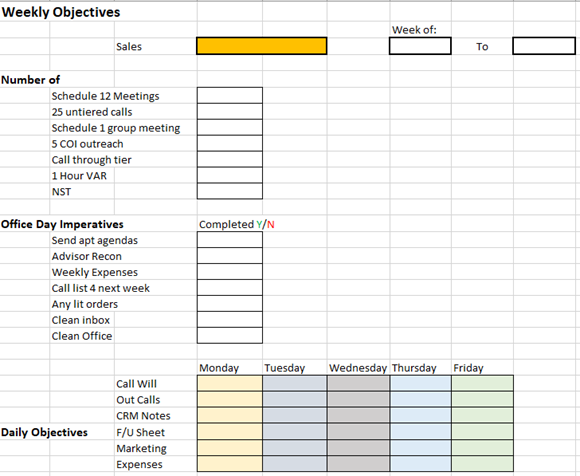Building your advisory business, Part 3: Creating a system for success
Something that I am asked by advisors over and over again is what ideas have you heard? or its cousin, what’s been working out there? It’s great to see advisors learn from each other and show willingness to grow and adopt new practices. However, I frequently have given an advisor an actionable idea and when I ask about it later, they mention they tried it a few times but didn’t continue. When I ask why, they don’t have an answer.
One of those ideas I have suggested is how to capture uninvested cash. I went through the idea with an advisor in Hillsboro, Oregon, not long ago. This initially resulted in some cash flow from the advisor but after a month or two of inaction, I called to ask if he was still using the idea. He said, no—but I need to get back to it.
This reinforced my belief that advisors generally know what they need to be doing. The magic ingredient for success is doing it consistently.
For me, establishing a system and using it consistently helps tremendously. It frees up my time because there is less guesswork about what I should be doing. It results in more sales, because if I keep moving the right balls forward, I’m always filling up my pipeline. Lastly, it gives me a sense of fulfillment week after week, knowing that I have done the right things.
Here is one way to create a system for repeatable and consistent success.
Step 1
List every activity you can do during a given week. Don’t worry, my first two blogs give you a good start.
Step 2
Separate them into three groups.
- Proactive, success-driving tasks: These are actions that if done consistently will get you to where you want to go.
- Things you have to do: I call these my stay employed tasks. They aren’t going to drive business, but you have to do them in order to do the job. Think, entering meeting notes.
- Daily tasks: These can be either, but they are things you want to/must do daily.
Step 3
Create SMART goals around the proactive tasks. For example, if your goal is to reach out to COIs (Centers of Influence), consider reaching out to three COIs per week.
SMART goals are:
- Specific: Make sure they have numbers attached. Don’t say reach out to COIs, say reach out to three COIs.
- Measurable: Make sure that you can track your goals. If you make them specific this should take care of itself.
- Attainable: Make sure that you can accomplish them! Don’t say I want to reach out to 25 COIs/week. If you are consistently failing your goals, you will become unmotivated.
- Realistic: Make sure you’re honest with yourself and your capabilities.
- Time-bound: Make sure there is a time limit on your goals. These are strategies and goals to create weekly. That automatically sets the timeline.
Step 4
Create your checklist!
I use Excel and print them out every Friday (Actually it’s part of my things I have to do tasks)
Here’s a sample of one of my weekly checklists:
Click image to enlarge
Step 5
Complete your checklist, every week. The beauty of this for me (you can design this type of system in a thousand different ways) is that I feel a sense of accomplishment when I shut down for the weekend. I don’t have to wonder anymore if I did everything I needed to do during the week. I can look at my checklist and know that I did. For me, that feeling is worth far more than the time it took to create it.
